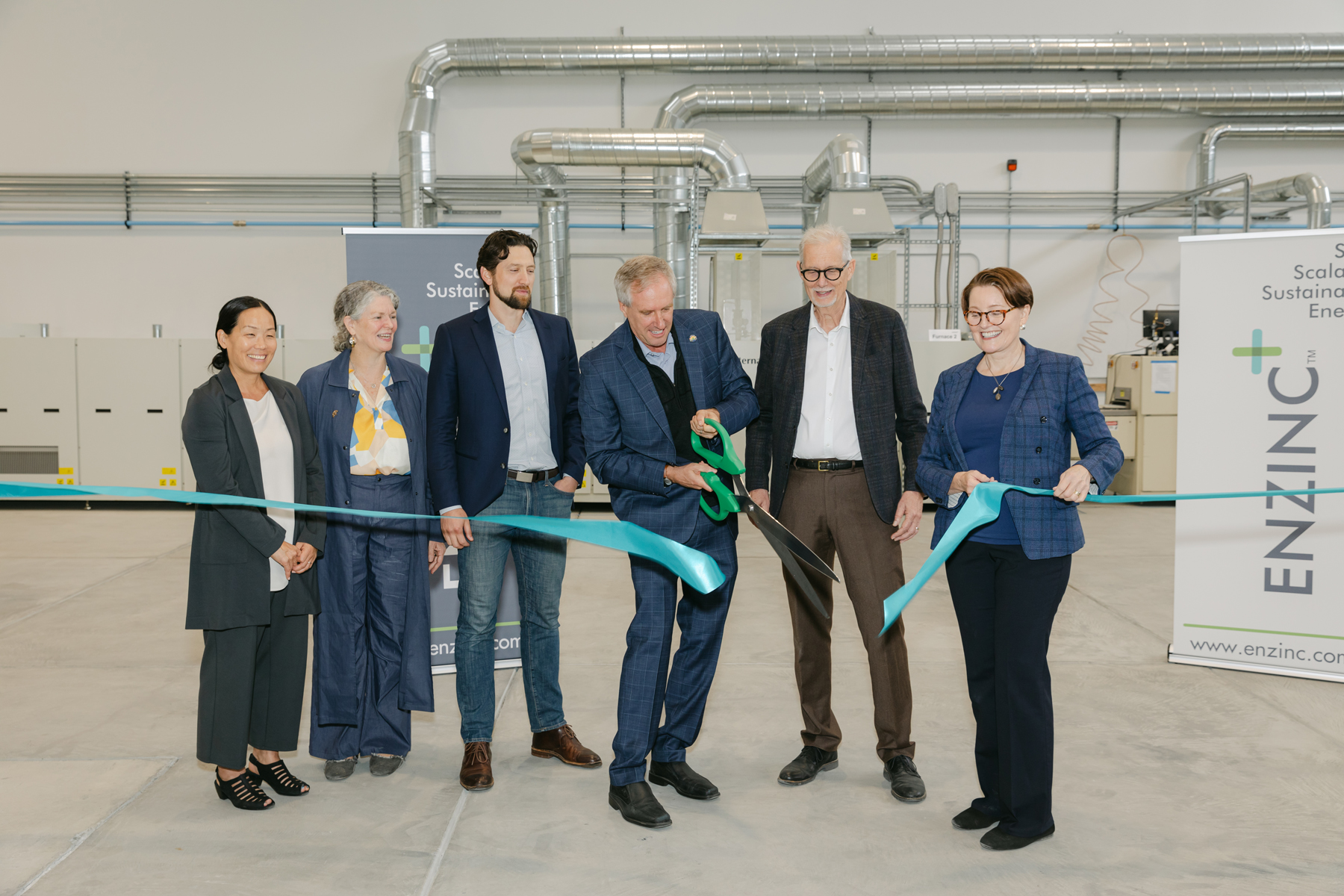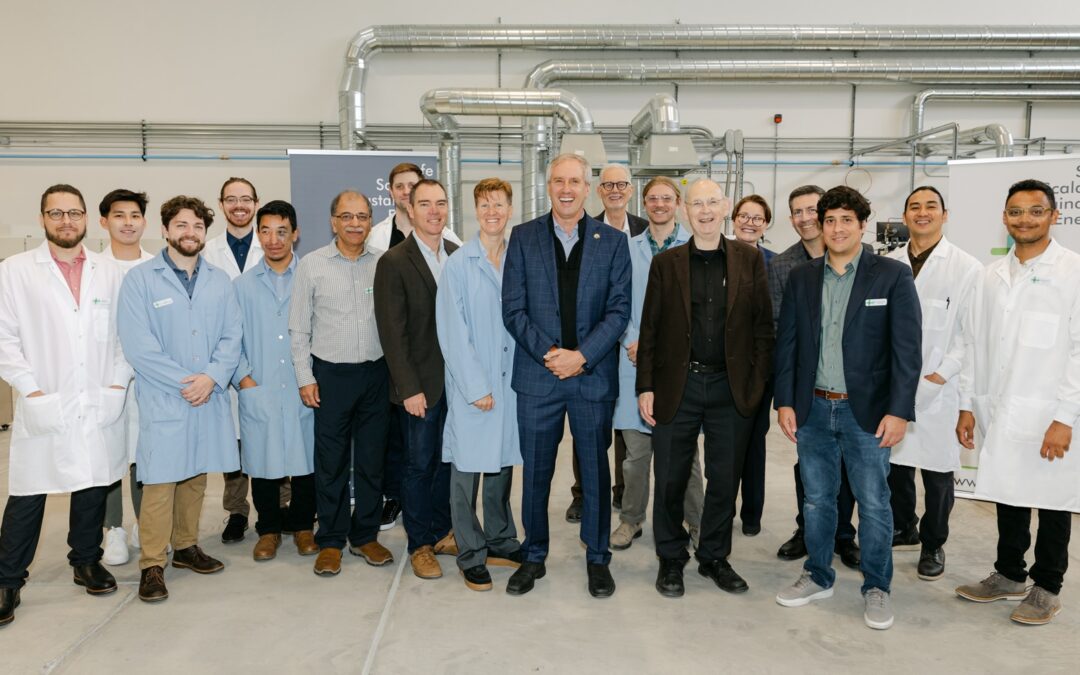OAKLAND, Calif. – 17 September 2024 – Enzinc Inc., a pioneer in advanced zinc battery technology, opened its state-of-the-art Manufacturing Technology Center in Oakland, California, to meet customers’ demand for the key component that enables them to expand their market and offer high-powered, fireproof zinc batteries for mobility and stationary energy storage. Enzinc makes the critical component for the batteries at the 10,000-square-foot facility.
The opening ceremony was attended by distinguished guests, including the chair of the California Energy Commission (CEC), David Hochschild, a champion of clean energy in the state, and Julie A. Caskey, the director of climate partnerships in the office of Oakland Mayor Sheng Thao.
“This important milestone for Enzinc is an example of public-private partnerships building energy resilience and adding high-quality jobs in America,” said Michael Burz, founder and CEO of Enzinc. “Our success builds on foundational science from the U.S. Naval Research Laboratory (NRL) and is possible because of state and federal grants and support from our investors. As the electrification of buildings, transportation, and the grid accelerates, we need more and better batteries. Enzinc is empowering our customers to meet that demand with safer, more versatile, and cost-effective battery solutions.”

L to R: Rebecca Lee, Managing Director of New Energy Nexus, Julie Caskey, Director of Climate Partnerships in the Office of Oakland Mayor Sheng Thao, Jake Pflaum, Partner, American Century Investments, David Hochschild, Chair of the California Energy Commission, Michael Burz, CEO and cofounder of Enzinc, Deborah Knuckey, cofounder and CMO of Enzinc.
Enzinc is scaling up and automating the production of its innovative zinc anodes at its manufacturing center in Oakland, a hub of innovation and clean energy. The company’s proprietary breakthrough technology is enabling traditional lead-acid battery makers to offer safe, sustainable, and substantially higher-powered nickel-zinc batteries with relatively minor capital-effective upgrades to their existing equipment.
“NRL’s Team Zinc is proud that by architecturally redesigning zinc into the form of a sponge electrode, we thwart formation of zinc dendrites in alkaline batteries,” said NRL Advanced Electrochemical Materials Section Head Debra Rolison, Ph.D. “Solving that impediment to rechargeable alkaline batteries has spurred R&D in zinc-based aqueous batteries, offering an energy-dense future alternative to the safety issues that still arise with lithium-based batteries.” Dr. Rolison stated she was honored to have NRL’s breakthrough acknowledged at the site now set to produce zinc sponges for next-generation, U.S.-manufactured batteries.
“California’s innovation ecosystem supports entrepreneurs who are driving the clean energy transition,” said Jon Bonanno, founder of Factor and a senior advisor to Enzinc. “Enzinc shows how we can develop and manufacture advanced battery technologies when insightful investors support companies that leverage grant programs such as the Department of Energy’s ARPA-E program and the CEC’s Electric Program Investment Charge (EPIC) and draw on California’s depth of engineering talent.”
The zinc microsponge technology, which overcomes the challenge that has historically limited the use of zinc in rechargeable batteries, was recently named by NRL as one of the “25 Technologies for the Next 25 Years.” Batteries with Enzinc Inside deliver the power of lithium-ion batteries at the cost of lead-acid batteries—without fire risks, HVAC requirements, or narrow operating temperature ranges. This groundbreaking technology not only enhances energy storage capabilities but also creates local engineering and manufacturing jobs.
“NRL’s technology transfer program plays a critical role in taking cutting-edge research from the lab and translating it into real-world applications,” said NRL Office of Technology Transfer Senior Partnership Manger Dr. Holly Ricks-Laskoski. “Our program is a robust conduit that enables partnerships between our researchers and industries, bringing scientific discoveries to the forefront of commercial use. This battery technology is a prime example of the types of partnerships we strive to foster, where research meets production, innovation meets practicality, and science meets the marketplace.”
The Manufacturing Technology Center was made possible in part by a $1.8 million grant under EPIC’s BRIDGE (Bringing Rapid Innovation Development to Green Energy) award. With this expansion, Enzinc is making a substantial impact in the energy storage industry, providing scalable and sustainable solutions for a rapidly electrifying world.
________
About the U.S. Naval Research Laboratory
NRL is a scientific and engineering command dedicated to research that drives innovative advances for the U.S. Navy and Marine Corps from the seafloor to space and in the information domain. NRL is located in Washington, D.C. with major field sites in Stennis Space Center, Mississippi; Key West, Florida; Monterey, California, and employs approximately 3,000 civilian scientists, engineers and support personnel. For more information, contact NRL Corporate Communications at (202) 480-3746 or [email protected].
For more partnerships or collaborations, contact the NRL Office of Technology Transfer: [email protected].

